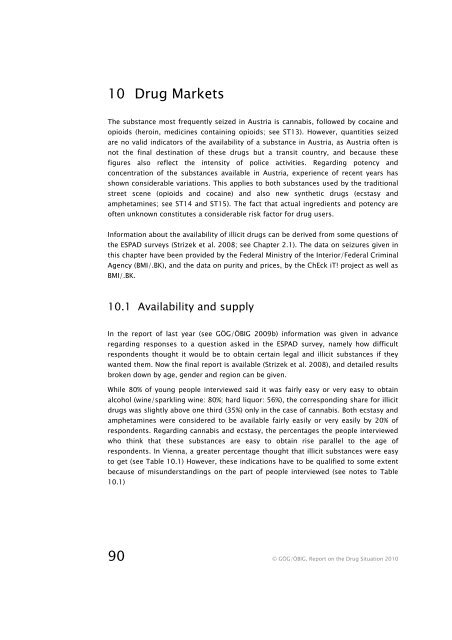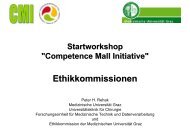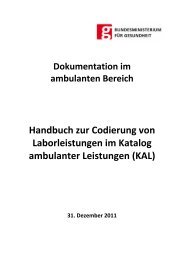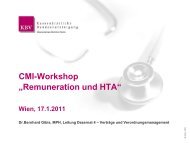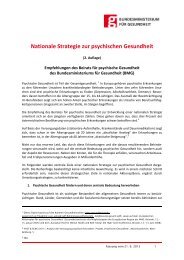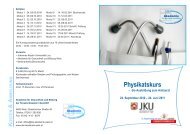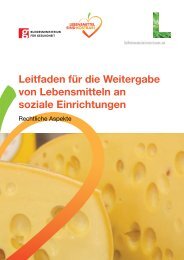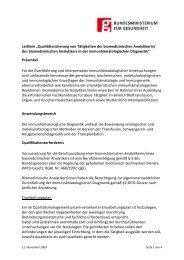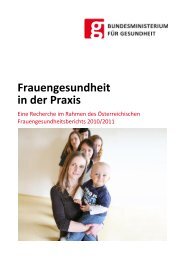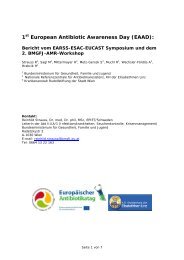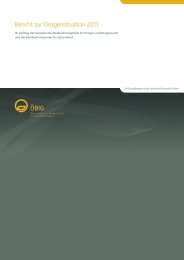Report on the Drug Situation 2010 - Bundesministerium für ...
Report on the Drug Situation 2010 - Bundesministerium für ...
Report on the Drug Situation 2010 - Bundesministerium für ...
- No tags were found...
Create successful ePaper yourself
Turn your PDF publications into a flip-book with our unique Google optimized e-Paper software.
10 <strong>Drug</strong> MarketsThe substance most frequently seized in Austria is cannabis, followed by cocaine andopioids (heroin, medicines c<strong>on</strong>taining opioids; see ST13). However, quantities seizedare no valid indicators of <strong>the</strong> availability of a substance in Austria, as Austria often isnot <strong>the</strong> final destinati<strong>on</strong> of <strong>the</strong>se drugs but a transit country, and because <strong>the</strong>sefigures also reflect <strong>the</strong> intensity of police activities. Regarding potency andc<strong>on</strong>centrati<strong>on</strong> of <strong>the</strong> substances available in Austria, experience of recent years hasshown c<strong>on</strong>siderable variati<strong>on</strong>s. This applies to both substances used by <strong>the</strong> traditi<strong>on</strong>alstreet scene (opioids and cocaine) and also new syn<strong>the</strong>tic drugs (ecstasy andamphetamines; see ST14 and ST15). The fact that actual ingredients and potency areoften unknown c<strong>on</strong>stitutes a c<strong>on</strong>siderable risk factor for drug users.Informati<strong>on</strong> about <strong>the</strong> availability of illicit drugs can be derived from some questi<strong>on</strong>s of<strong>the</strong> ESPAD surveys (Strizek et al. 2008; see Chapter 2.1). The data <strong>on</strong> seizures given inthis chapter have been provided by <strong>the</strong> Federal Ministry of <strong>the</strong> Interior/Federal CriminalAgency (BMI/.BK), and <strong>the</strong> data <strong>on</strong> purity and prices, by <strong>the</strong> ChEck iT! project as well asBMI/.BK.10.1 Availability and supplyIn <strong>the</strong> report of last year (see GÖG/ÖBIG 2009b) informati<strong>on</strong> was given in advanceregarding resp<strong>on</strong>ses to a questi<strong>on</strong> asked in <strong>the</strong> ESPAD survey, namely how difficultresp<strong>on</strong>dents thought it would be to obtain certain legal and illicit substances if <strong>the</strong>ywanted <strong>the</strong>m. Now <strong>the</strong> final report is available (Strizek et al. 2008), and detailed resultsbroken down by age, gender and regi<strong>on</strong> can be given.While 80% of young people interviewed said it was fairly easy or very easy to obtainalcohol (wine/sparkling wine: 80%; hard liquor: 56%), <strong>the</strong> corresp<strong>on</strong>ding share for illicitdrugs was slightly above <strong>on</strong>e third (35%) <strong>on</strong>ly in <strong>the</strong> case of cannabis. Both ecstasy andamphetamines were c<strong>on</strong>sidered to be available fairly easily or very easily by 20% ofresp<strong>on</strong>dents. Regarding cannabis and ecstasy, <strong>the</strong> percentages <strong>the</strong> people interviewedwho think that <strong>the</strong>se substances are easy to obtain rise parallel to <strong>the</strong> age ofresp<strong>on</strong>dents. In Vienna, a greater percentage thought that illicit substances were easyto get (see Table 10.1) However, <strong>the</strong>se indicati<strong>on</strong>s have to be qualified to some extentbecause of misunderstandings <strong>on</strong> <strong>the</strong> part of people interviewed (see notes to Table10.1)90 © GÖG/ÖBIG, <str<strong>on</strong>g>Report</str<strong>on</strong>g> <strong>on</strong> <strong>the</strong> <strong>Drug</strong> Situati<strong>on</strong> <strong>2010</strong>


